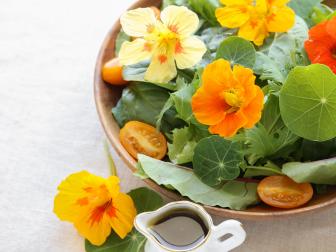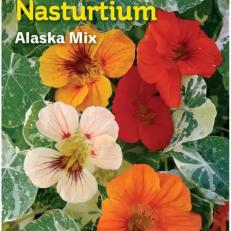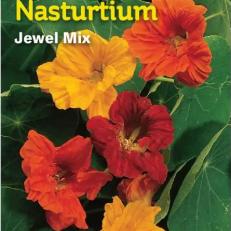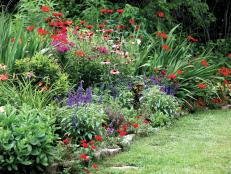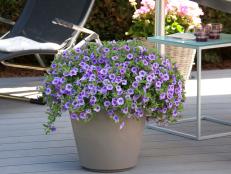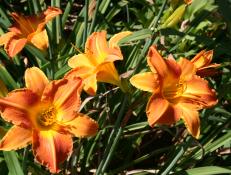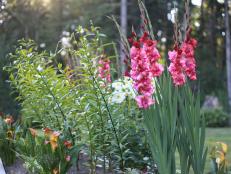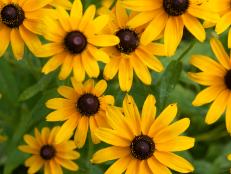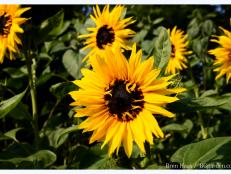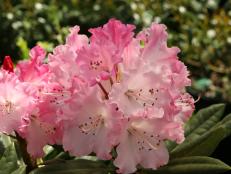How to Grow Nasturtium
Learn how to plant and care for nasturtium, an old-fashioned, easy-to-grow annual garden favorite that's beloved for its edible leaves and flowers.
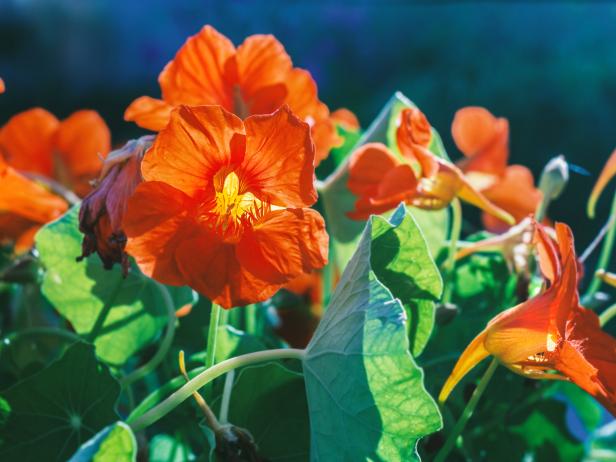
Shutterstock/Belozerova Daria

Nasturtium flowers give your yard a casual, cottage-garden vibe. They look beautiful climbing a fence, tumbling out of a window box, or sprawling over the ground of a rock garden. A fence covered in nasturtium in brilliant yellow, red and orange blooms says “I want my garden to look joyously random, a reminder that nature's in charge, not man.”
But nasturtium aren't just pretty. They serve as valuable companion plants in a vegetable garden, and bonus: You can eat them, too. Sprinkle the blooms, leaves or unripe seed pods into a salad to add a peppery, cress-like taste. Here's what you need to know about growing nasturtium.
Botanical Name: Tropaeolum majus
Common Names: Nasturtium
Bloom Time: Summer, Fall
Hardiness Zones: 9 to 11, grown as an annual in cooler zones
Nasturtium is native to Mexico and Peru, where the Inca and other native peoples ate the whole plant as a salad vegetable. Europeans brought nasturtium to the Old World in the 16th century and grew it for food as well as fragrance. Victorians used nasturtium in their tussie mussie bouquets, and they pickled nasturtium buds like capers and used them to season food. The artist Claude Monet grew nasturtiums in his garden in Giverny, France, and their descendants grow there today.
These old-fashioned favorites are having a moment as gardeners have rediscovered heirloom plants. Nasturtiums have showy flowers with a sweet fragrance. They may be single or double-blooms, and they come in a slew of colors including orange, yellow, maroon, red, pale yellow and white. You can get seed packs with mixed or single colors.
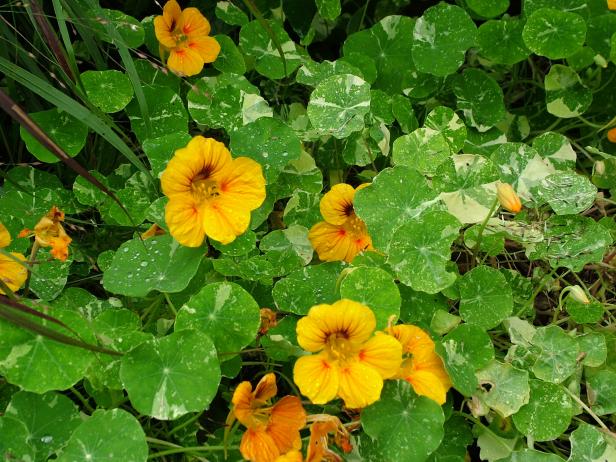
Some nasturtium varieties have variegated color on their leaves, including the 'Alaska' and 'Troika' varieties.
Planting and Growing Nasturtium
While there are various types and varieties of nasturtium (see below), they're all grown the same.
When to Plant
Nasturtiums are a cool-season annual. That means they're exhausted as soon as temperatures top 85 degrees, so grow them in early spring or fall. In Zones 2 to 8, plant them after the last spring frost for spring and early summer flowers. If you live in a tropical climate where freezes never come, plant them in the fall for winter blooms.
How to Plant
Plant nasturtiums from seed. Some gardeners soak them for a few hours before planting, like with peas and sweet peas, to help break down the hard seed coating, but it's not necessary. Plant seeds about an inch deep spaced a few inches apart and cover with soil. Label plantings, as nasturtium seedlings could be mistaken for weeds. Nasturtium grows best sown directly outdoors rather than started indoors and transplanted.
How to Care for Nasturtiums
These annual flowers are easy to grow, but a few tips will help you keep them healthy and productive.
- Mulch the soil to keep weeds down and reduce the amount of watering you have to do.
- Water regularly, about one inch per week. Nasturtium get ratty looking and stop blooming fast if they get too dry.
- Do not fertilize them. This is rule one of nasturtium care. If you overfeed them, they'll put out lots of leaves and not many flowers.
- Clip off faded flowers to keep them blooming.
Companion Planting and Pests
Nasturtium attract whitefly and cabbage caterpillars. That's good, and it's why smart gardeners use them as a companion plant in a vegetable garden; this type of companion plant is called a "trap crop." The bugs get on the nasturtiums instead of the veggies, and you can catch them on the nasturtium before they destroy your tomatoes.
Just spray the nasturtium with a hose to blast the aphids and whitefly, and pick off the cabbage caterpillars by hand. They also repel Japanese beetles, another reason they're a perfect neighbor for your vegetables.
Harvesting and Using
The edible leaves and blooms can be used in so many ways, not only adding color but spicy flavor to dishes.
- Snip off blooms and young nasturtium leaves and sprinkle them on salads.
- Use as an edible garnish in cocktails.
- Grind nasturtium leaves into pesto.
- Save some seeds for next year's garden. Dry them out and store them in a paper envelope in a cool, dark place.
21 Edible Flowers: Weeds and Flowers You Can Actually Eat 22 Photos
A surprising array of pretty flowers and ordinary weeds are actually edible. Find out which edible flowers and weeds you can add to your next salad.
Nasturtium Types and How to Use Them
Nasturtiums come in three basic types:
Mounding nasturtium varieties are small and bushy plants, growing 15" tall, 12" wide. They stay where you put them, no trailing or creeping, so they're tidy plants. They're a good choice for beds, borders and small space gardens.
Semi-trailing nasturtium varieties are medium-sized plants with vines that grow 2 to 3 feet long, making them ideal for baskets or pots. They look lovely trailing over the edges of the container.
Climbing nasturtium varieties are large plants that grow vines reaching as tall as 12 feet. They pull themselves up with curling leafstalks. Plant next to a wall or trellis to add height to a garden or make a living screen of flowers. They can also be a groundcover.
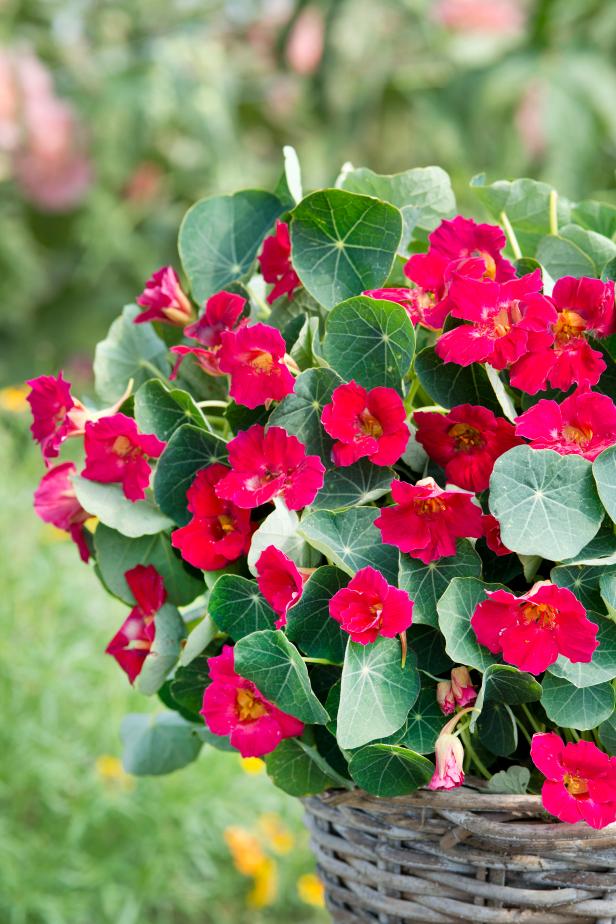
National Garden Bureau at ngb.org
An old-fashioned favorite, nasturtium adds interest to any container garden with its round leaves and fluttering petals. This compact mounding variety is ‘Baby Rose.’
Recommended Nasturtium Varieties
Mounding Types
'Alaska' series have variegated leaves speckled in cream, and blooms in gold, orange, salmon and mahogany. They're an heirloom variety that gets 10" to 12" high and 8" to 10" wide.
'Baby Rose' is a compact mounder with petite flowers that stand upright on strong stems. It’s an All-America Selections winner, which means it grows well in every region.
'Empress of India' is a Victorian heirloom with blue-green leaves and deep red flowers. Plants get about a 1' high and 10" wide and are a good choice for containers, hanging baskets or small kitchen gardens.
'Jewel' series has double and semi-double flowers.
'Peach Melba' is a bushy dwarf with semi-double butter-yellow flowers that have orange-red centers.
'Vesuvius' is an heirloom variety grown in kitchen gardens since the late 1800s. It has salmon blooms and dark, blue-green leaves.
'Whirlybird Mix' has yellow, orange, rose and red blooms.
Semi-Trailing Nasturtium Types
'Gleam' series was first found growing in a convent garden in Mexico in the 1920s and became popular in U.S. gardens during the Depression, with home gardeners selling their seeds to help pay the bills.
'Troika' comes in red and orange varieties. Orange 'Troika' also has white-streaked foliage.
Climbing Nasturtium Types
'Canary Creeper' (T. Peregrinium) is a vine in the nasturtium genus that produces yellow flowers on vines that reach 8' to 12' in length. It's more cold-hardy than other nasturtium, perennial in Zones 7 to 10.
'Moonlight' has pale yellow blooms.
'Out of Africa' series has dark red blooms on olive-green leaves.






